NORMANDY, FRANCE
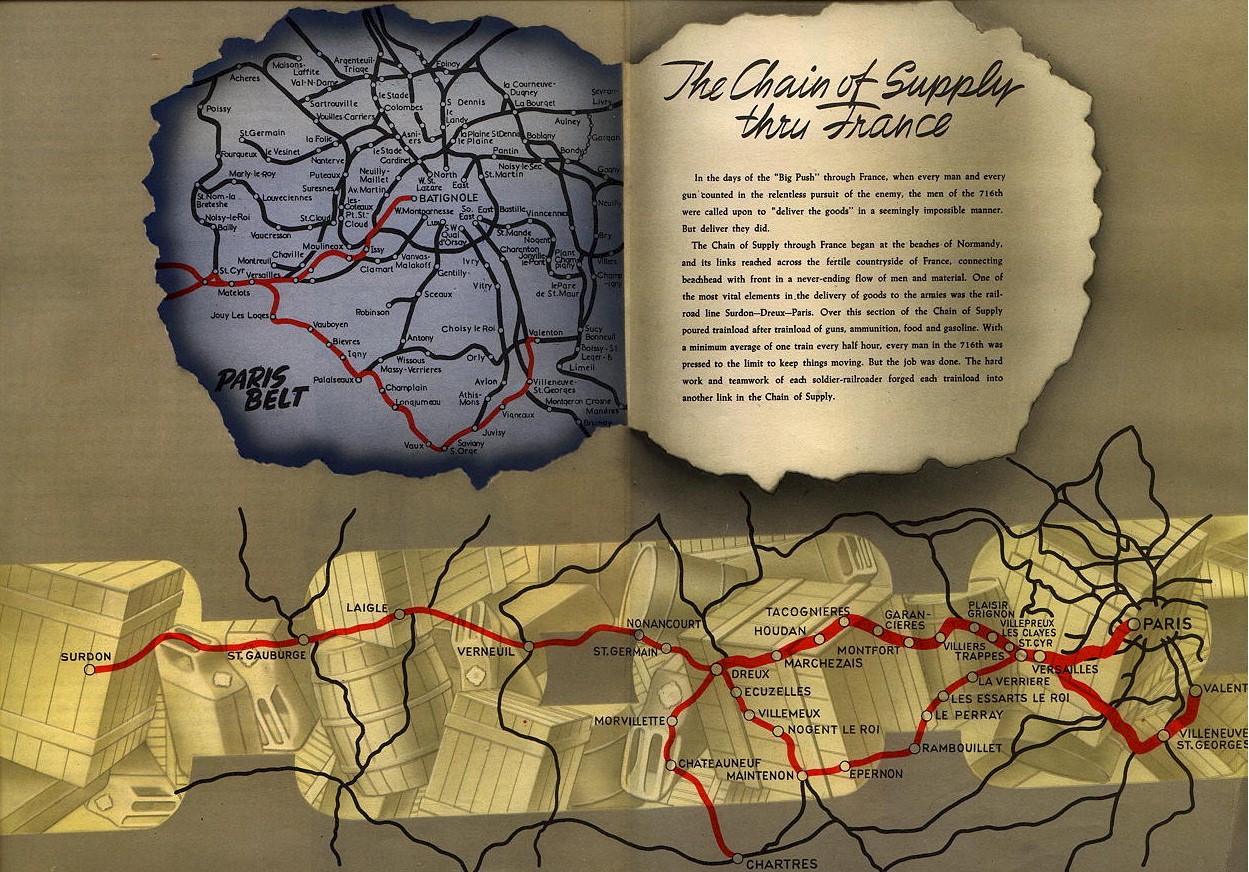 Prior to the 716th's landing at Normandy the Military Railway
Service (MRS) set up operations in early 1944 in Blighton Barracks in Southampton,
England. In the months leading up to the invasion the men of the MRS kept busy
with familiarizing themselves with the peculiarities of the English and French
railway procedures. In no time at all the Soldier-Railroaders had their
own trains running troops and supplies throughout southern England prior
to the invasion. Eleven days after the invasion a small detachment of the Second
MRS under Brigadier General Clarence L. Burpee arrived at Omaha beach. Facing
constant strafing by German planes the General and the men of the 2nd MRS
carried out their mission of surveying the damaged railway systems and locating
all nearby railway locomotives. After Cherbourg was captured the 2nd MRS set up
operations there and soon two Railway Operating battalions were sent to Northern
France the 728th and the 729th, along with the 707th Railway Grand Division.
Soon more and more operating battalions and grand divisions followed and were
setting up operations all over newly liberated Northern France and Brittany
Prior to the 716th's landing at Normandy the Military Railway
Service (MRS) set up operations in early 1944 in Blighton Barracks in Southampton,
England. In the months leading up to the invasion the men of the MRS kept busy
with familiarizing themselves with the peculiarities of the English and French
railway procedures. In no time at all the Soldier-Railroaders had their
own trains running troops and supplies throughout southern England prior
to the invasion. Eleven days after the invasion a small detachment of the Second
MRS under Brigadier General Clarence L. Burpee arrived at Omaha beach. Facing
constant strafing by German planes the General and the men of the 2nd MRS
carried out their mission of surveying the damaged railway systems and locating
all nearby railway locomotives. After Cherbourg was captured the 2nd MRS set up
operations there and soon two Railway Operating battalions were sent to Northern
France the 728th and the 729th, along with the 707th Railway Grand Division.
Soon more and more operating battalions and grand divisions followed and were
setting up operations all over newly liberated Northern France and Brittany
The 716th ROB lands in France
The Cheshire landed at the Mulberry port facility at Omaha Beach on D-day+81. The men walked down the steel pier towards the beaches that just a few months before was the scene of total carnage and devastation. After setting up a bivouac camp just north of the beach. the men settled in to an meal of "C" and "K" rations and some rain. After transportation was arranged the men loaded onto trucks for the town of Chef du Pont. there they got their first look at an American diesel locomotive - A 2-8-0 and their first look at a "40 and 8" railcar. Supposedly the railcar was to hold 40 men or eight horses but the most the 716th could get in there was 36 men due to the well supplied GI and their over stuffed packs. At 1930 hours the train departed for their first destination on the continent of Europe: Chartres, France. On the way the men passed by the devastation that three months of war had brought to the French countryside as they passed by St Lo and other cities smashed by war. The train road all night and the next morning the men of the 716th reached the city of Lemans. After switching locomotives the train continued on towards their destination. They arrived in Chartres on the next afternoon on August 30, 1944. After they arrived the men quickly fond out that a SNAFU had occurred and the destination was wrong. So the men loaded back into the train and headed to Dreux, France. Once they arrived in Dreux, the 716th set up their HQ in what would be their home for the next few months.
.
Druex, France
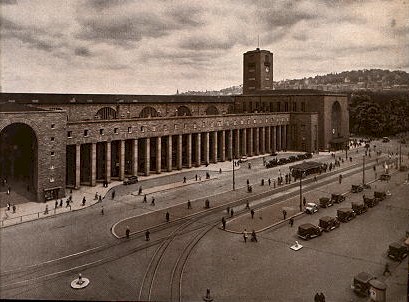 The 716th arrived in France in August 1944 and was soon sent to it's first assignment at Dreux. The Headquarters or H&H Company immediately dispersed as for Detached Service(DS). Lt. P.G. Carr and Master Sergeant C.N. Thomas along with fourteen men set up a block stations along the Surdon route. Two men each were dropped off at each “La Gare’ or station from Cherbourg to Paris. These men would switch the trains at each junction. Block stations were set up on other routes as well throughout the 716th’s area of operations. Work at first was difficult. The damaged rails and bridges forced the use of only a single track. This meant that only one train could be on a portion of the track at a time, and had to be scheduled precisely so there were no accidents. The messes (areas the supply men set up to serve food to the men) were set up at different places through out the Dreux Area. Mess halls were set up at Dreux, Versailles, Trappes, Villiers, and Houdon. Civilians were hired as dishwashers and mess attendants as the highly trained men of the 716th were needed elsewhere and could not be assigned to KP duty. Uncle Raoul was assigned to "A" Company. The company was commanded by Captain Neander E. Peterson formerly of the C.I. & M. Railroad. "A" company was divided into four platoons. A Headquarters platoon, a Bridge and Building (B&B) platoon , a Signal platoon, and a "Gandy Dancer" or track platoon. Uncle Raoul worked in the Headquarters platoon as a clerk. The HQ Platoon under the command of Lt. Victor Johnson formerly of the Louisville & Nashville (L&N) Railroad. The platoon worked with mechanical drawings and assorted drafts, and they worked in conjunction with other platoons by preparing blueprints of their work performed. On September 2, 1944 "A" Company arrived at Dreux, France, their first assignment. The first day the
Linemen, Trackmen, and Bridgemen made their living quarters at Ceserne habitable. After a thorough cleaning, and much need repair work the men settled into their accommodations. The 716th were assigned the route from Dreux to Paris with other lines running from Chartres and Surdon. The men had plenty of work ahead of them. Hundreds of miles of
The 716th arrived in France in August 1944 and was soon sent to it's first assignment at Dreux. The Headquarters or H&H Company immediately dispersed as for Detached Service(DS). Lt. P.G. Carr and Master Sergeant C.N. Thomas along with fourteen men set up a block stations along the Surdon route. Two men each were dropped off at each “La Gare’ or station from Cherbourg to Paris. These men would switch the trains at each junction. Block stations were set up on other routes as well throughout the 716th’s area of operations. Work at first was difficult. The damaged rails and bridges forced the use of only a single track. This meant that only one train could be on a portion of the track at a time, and had to be scheduled precisely so there were no accidents. The messes (areas the supply men set up to serve food to the men) were set up at different places through out the Dreux Area. Mess halls were set up at Dreux, Versailles, Trappes, Villiers, and Houdon. Civilians were hired as dishwashers and mess attendants as the highly trained men of the 716th were needed elsewhere and could not be assigned to KP duty. Uncle Raoul was assigned to "A" Company. The company was commanded by Captain Neander E. Peterson formerly of the C.I. & M. Railroad. "A" company was divided into four platoons. A Headquarters platoon, a Bridge and Building (B&B) platoon , a Signal platoon, and a "Gandy Dancer" or track platoon. Uncle Raoul worked in the Headquarters platoon as a clerk. The HQ Platoon under the command of Lt. Victor Johnson formerly of the Louisville & Nashville (L&N) Railroad. The platoon worked with mechanical drawings and assorted drafts, and they worked in conjunction with other platoons by preparing blueprints of their work performed. On September 2, 1944 "A" Company arrived at Dreux, France, their first assignment. The first day the
Linemen, Trackmen, and Bridgemen made their living quarters at Ceserne habitable. After a thorough cleaning, and much need repair work the men settled into their accommodations. The 716th were assigned the route from Dreux to Paris with other lines running from Chartres and Surdon. The men had plenty of work ahead of them. Hundreds of miles of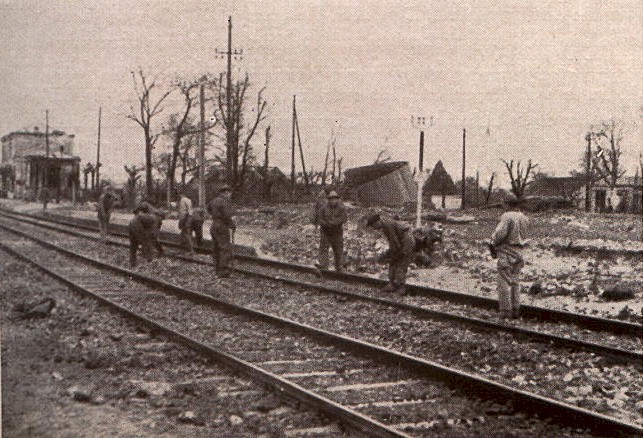 track had been damaged by the bombings and
shelling and it was up to the 716th, and especially the men of "A" Company to get it all working again. The signal platoon had to install and maintain communications throughout the entire area of operations. New wire had to be strung, poles and insulators replaced, relays and switches had to be repaired and patched, and countless other jobs done before communications could be restored. The trackmen had an enormous job for them there at Dreux. The yards had been heavily damaged during the bombings. Track and switches were destroyed and rolling stock was tossed and twisted about everywhere. The track crew cleared out wrecked cars, filled in bomb craters, and repaired the damaged track in short order. In
addition to restoring the yard to it's original configuration, the men added another main line and seven additional sidings. The efforts of the trackmen greatly improved the yard's efficiency.
Meanwhile the B&B men
track had been damaged by the bombings and
shelling and it was up to the 716th, and especially the men of "A" Company to get it all working again. The signal platoon had to install and maintain communications throughout the entire area of operations. New wire had to be strung, poles and insulators replaced, relays and switches had to be repaired and patched, and countless other jobs done before communications could be restored. The trackmen had an enormous job for them there at Dreux. The yards had been heavily damaged during the bombings. Track and switches were destroyed and rolling stock was tossed and twisted about everywhere. The track crew cleared out wrecked cars, filled in bomb craters, and repaired the damaged track in short order. In
addition to restoring the yard to it's original configuration, the men added another main line and seven additional sidings. The efforts of the trackmen greatly improved the yard's efficiency.
Meanwhile the B&B men 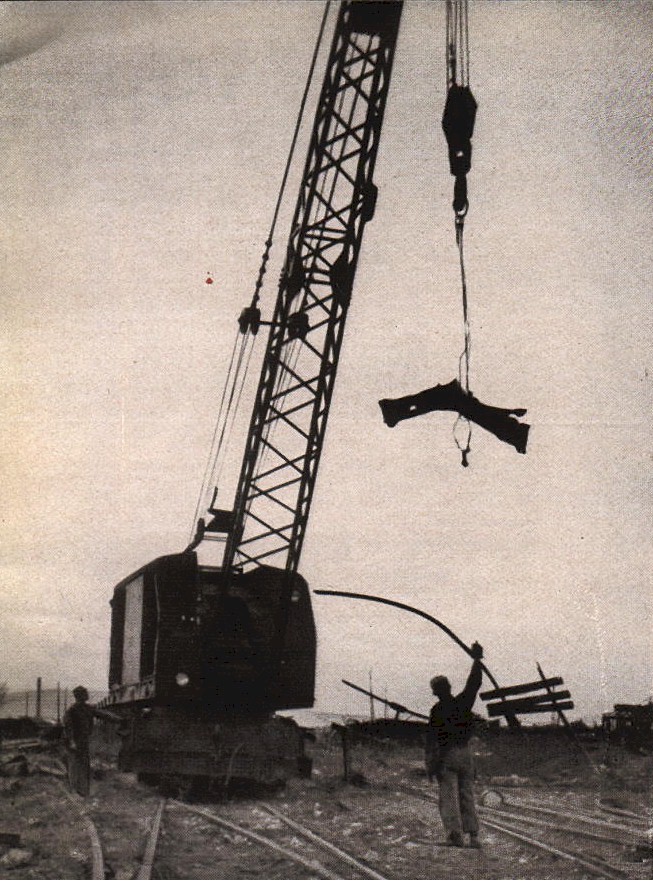 were busy replacing 300 feet of 12" water main in the Dreux Yard. Soon after the 716th arrived detachments of men were
dispersed throughout the unit's area of responsibility. Detached service or "DS" was sometimes the only means that large amounts of work could be accomplished. The men were dispersed to many different areas including Houdon, Villiers-Neauphle, and Versailles. An emergency pumping station was set up at Houdon in order for trains
traveling through to Dreux and Paris could get water. Lodging was sometimes a problem and the
work seemed never ending . But the trackmen, water service men and the signal men made do with what they had. A second Pumping plant was set up a
Villiers. The 716th suffering from inadequate tools and poor weather conditions worked diligently on restoring the line to full operation. A last minute change in the supply situation allowed the men of the 716th to arrive in France without their railroading equipment. The men of "A" company made do with what French tools they could find and some captured German tools they acquired. The B&B Men worked on repairing the Bridges from Dreux to Paris.
were busy replacing 300 feet of 12" water main in the Dreux Yard. Soon after the 716th arrived detachments of men were
dispersed throughout the unit's area of responsibility. Detached service or "DS" was sometimes the only means that large amounts of work could be accomplished. The men were dispersed to many different areas including Houdon, Villiers-Neauphle, and Versailles. An emergency pumping station was set up at Houdon in order for trains
traveling through to Dreux and Paris could get water. Lodging was sometimes a problem and the
work seemed never ending . But the trackmen, water service men and the signal men made do with what they had. A second Pumping plant was set up a
Villiers. The 716th suffering from inadequate tools and poor weather conditions worked diligently on restoring the line to full operation. A last minute change in the supply situation allowed the men of the 716th to arrive in France without their railroading equipment. The men of "A" company made do with what French tools they could find and some captured German tools they acquired. The B&B Men worked on repairing the Bridges from Dreux to Paris.
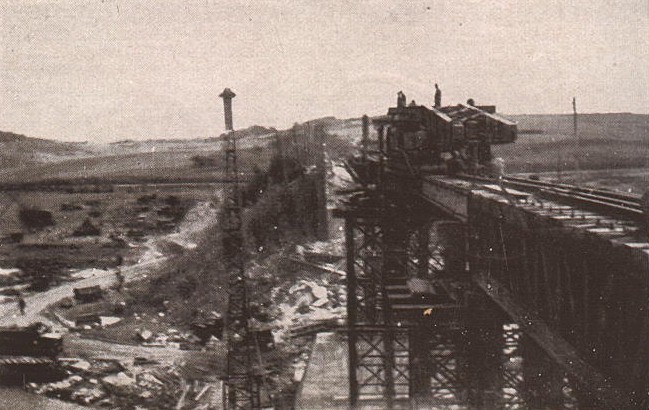 A total of eight bridges had to be repaired. Five more were repaired from Villiers to Paris and Valenton. In Addition to their
bridge repair duties the B&B men built or repaired various coal chutes and turntables. Uncle Raoul's "Blueprint Boys" in Headquarters platoon worked non-stop on drafting new plans and charts for use by the other sections of the battalion. The men were instrumental in obtaining surveys and grade lines on the Dreux to Paris run and the Villiers to St George leg. Much gratitude was owed to the drivers of Company "A" for their unending efforts in delivering of supplies to the entire battalion day or night, rain or shine. While the men of "A" Company were getting the tracks ready and making necessary repairs the men from "C" Company had their hands full too."C" Company was under the command of Captain William P. "CAP" Olson formerly from the Southern Pacific(SP)Railway. The company arrived in Dreux and began their work almost immediately. That night the first road crew was called upon to make a test run. The train left Dreux for Chartres at 2245. After an uneventful trip the train arrived at 0300 hours. The trip took nearly four and half-hours due to the men’s unfamiliarity with the engine and the route.
A total of eight bridges had to be repaired. Five more were repaired from Villiers to Paris and Valenton. In Addition to their
bridge repair duties the B&B men built or repaired various coal chutes and turntables. Uncle Raoul's "Blueprint Boys" in Headquarters platoon worked non-stop on drafting new plans and charts for use by the other sections of the battalion. The men were instrumental in obtaining surveys and grade lines on the Dreux to Paris run and the Villiers to St George leg. Much gratitude was owed to the drivers of Company "A" for their unending efforts in delivering of supplies to the entire battalion day or night, rain or shine. While the men of "A" Company were getting the tracks ready and making necessary repairs the men from "C" Company had their hands full too."C" Company was under the command of Captain William P. "CAP" Olson formerly from the Southern Pacific(SP)Railway. The company arrived in Dreux and began their work almost immediately. That night the first road crew was called upon to make a test run. The train left Dreux for Chartres at 2245. After an uneventful trip the train arrived at 0300 hours. The trip took nearly four and half-hours due to the men’s unfamiliarity with the engine and the route. 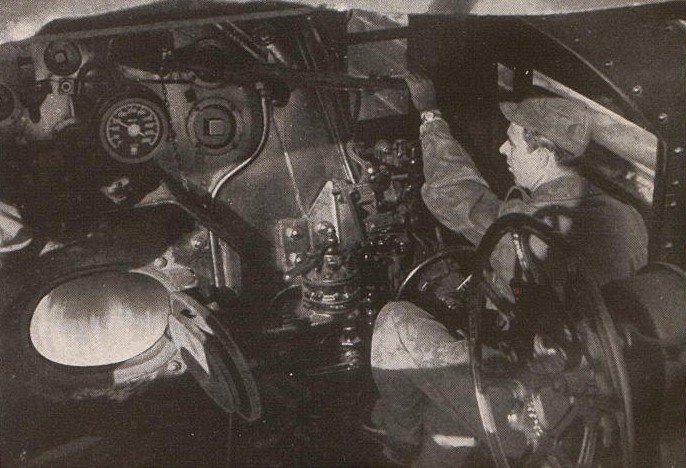 Back in Dreux the men started to organize into crews for upcoming assignments. While the men waited, they managed to mingle with the French people who had just been liberated from the Germans. The French were very friendly and gave the railroaders what food and items they could spare. Soon the men were running trains of ammunition and gasoline into Paris. Several crews went as far as the front to deliver supplies. The men of "C" Company had to get used to the way the Societe Nationale des Chemins de fer Francais (SNCF) or “SNAFU” railroaders did their job. Everything was different, hand signals were confusing, automatic signals were inoperative, and the language barrier was difficult to overcome. But the men persevered and were successful in getting routes set up and trains delivered on time. The men would work 16 hours days and then 18 and finally no limit to the hours just “work until you were done”. Some railroaders would leave Dreux and not return back for days at a time while they were delivering supplies. The war effort needed food, ammunition, gasoline,
Back in Dreux the men started to organize into crews for upcoming assignments. While the men waited, they managed to mingle with the French people who had just been liberated from the Germans. The French were very friendly and gave the railroaders what food and items they could spare. Soon the men were running trains of ammunition and gasoline into Paris. Several crews went as far as the front to deliver supplies. The men of "C" Company had to get used to the way the Societe Nationale des Chemins de fer Francais (SNCF) or “SNAFU” railroaders did their job. Everything was different, hand signals were confusing, automatic signals were inoperative, and the language barrier was difficult to overcome. But the men persevered and were successful in getting routes set up and trains delivered on time. The men would work 16 hours days and then 18 and finally no limit to the hours just “work until you were done”. Some railroaders would leave Dreux and not return back for days at a time while they were delivering supplies. The war effort needed food, ammunition, gasoline, 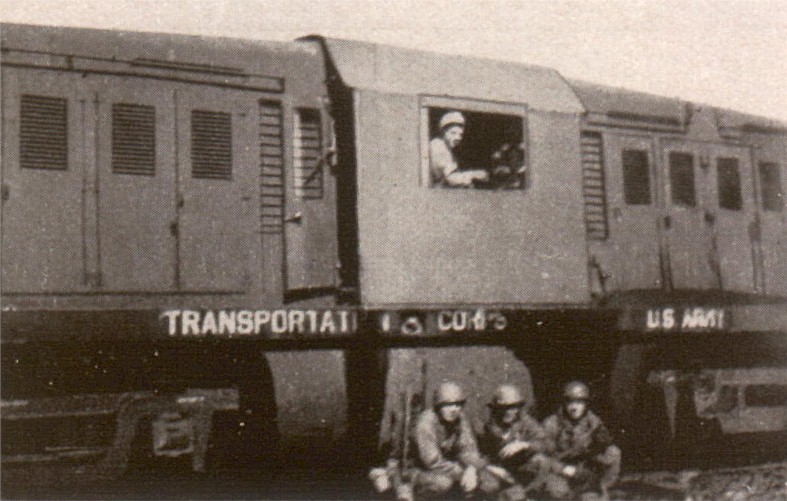 and medical supplies, and the men of the 716th provided them. By the beginning of October a severe manpower shortage presented itself and the 716th found itself short of men. Crews were reduced to four, eliminating the brakeman. The shortage was so severe that former infantrymen from the replacement depot were used as well as men from “A” Company and supply clerks were drafted into "C" Company. The situation continued until twenty experienced crews were transferred to the 716th from the 732nd ROB. While the men from "A" and "C" Companies were working feverishly at Dreux, the Men from "B" Company would really have their work cut out for them. "B" Company was under the command of Captain Samuel Gillespie (SP). Gillespie was a veteran of the 719th ROB in North Africa. No sooner than the Mechanics and Machinists of "B" Company arrived in Dreux then they were handed an impossible task. They had to get the all abandoned engines running again at Dreux. Without unpacking their bags the men proceeded directly from the train into the yard. "B" company arrived at Dreux with no tools and mountains of work to do. The French roundhouse was not a roundhouse at all, before the war it was just a servicing station for through trains to Paris. Now the limited station facilities were bombed and destroyed. So "B" company had to make do with what tools and equipment they could scrounge. After setting up a side track, the men started their monumental task of repairing the engines. The car men meanwhile were given the task of inspecting all the cars in the yard since they had no tools to work with. Within days they were making progress, and had set up quarters for the men to live in. Just as things proceeding well orders came down for the men of "B" Company to proceed to Trappes independently of the battalion.
and medical supplies, and the men of the 716th provided them. By the beginning of October a severe manpower shortage presented itself and the 716th found itself short of men. Crews were reduced to four, eliminating the brakeman. The shortage was so severe that former infantrymen from the replacement depot were used as well as men from “A” Company and supply clerks were drafted into "C" Company. The situation continued until twenty experienced crews were transferred to the 716th from the 732nd ROB. While the men from "A" and "C" Companies were working feverishly at Dreux, the Men from "B" Company would really have their work cut out for them. "B" Company was under the command of Captain Samuel Gillespie (SP). Gillespie was a veteran of the 719th ROB in North Africa. No sooner than the Mechanics and Machinists of "B" Company arrived in Dreux then they were handed an impossible task. They had to get the all abandoned engines running again at Dreux. Without unpacking their bags the men proceeded directly from the train into the yard. "B" company arrived at Dreux with no tools and mountains of work to do. The French roundhouse was not a roundhouse at all, before the war it was just a servicing station for through trains to Paris. Now the limited station facilities were bombed and destroyed. So "B" company had to make do with what tools and equipment they could scrounge. After setting up a side track, the men started their monumental task of repairing the engines. The car men meanwhile were given the task of inspecting all the cars in the yard since they had no tools to work with. Within days they were making progress, and had set up quarters for the men to live in. Just as things proceeding well orders came down for the men of "B" Company to proceed to Trappes independently of the battalion.
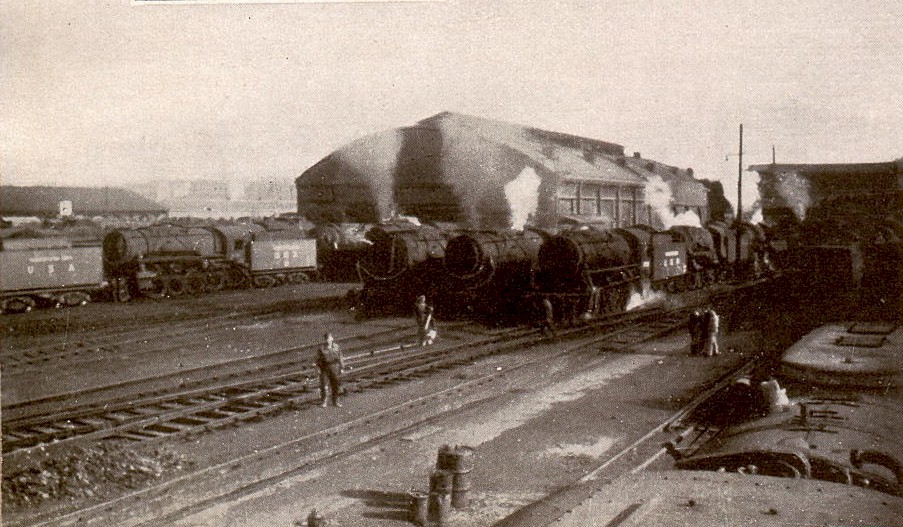 On September 20 "B" Company moved into the Batignole yards. At first the situation was the same; disagreements with the French on working conditions and no tools or equipment. Then after a reaching an arraignment, the GI’s would work on the GI locomotives and the French would work on their own. The GI’s scrounged the entire city of Paris and found enough tools to start work on their engines. Work began for the men of "B" Company 12 hour shifts overlapped into 18 hours, working around the clock the men began to clear out the back logged locomotives, averaging 51 to 56 a day. A peak was reached by October 7 of 63 locomotives serviced and turned in a single day. The car men too had their work cut out for them. They worked around the clock at Batignole servicing and repairing cars ensuring they were ready for the trains. On 14 October the work operations were turned over to the 764th ROB and the railroaders of "B" Company were sent to a new location. That location
On September 20 "B" Company moved into the Batignole yards. At first the situation was the same; disagreements with the French on working conditions and no tools or equipment. Then after a reaching an arraignment, the GI’s would work on the GI locomotives and the French would work on their own. The GI’s scrounged the entire city of Paris and found enough tools to start work on their engines. Work began for the men of "B" Company 12 hour shifts overlapped into 18 hours, working around the clock the men began to clear out the back logged locomotives, averaging 51 to 56 a day. A peak was reached by October 7 of 63 locomotives serviced and turned in a single day. The car men too had their work cut out for them. They worked around the clock at Batignole servicing and repairing cars ensuring they were ready for the trains. On 14 October the work operations were turned over to the 764th ROB and the railroaders of "B" Company were sent to a new location. That location 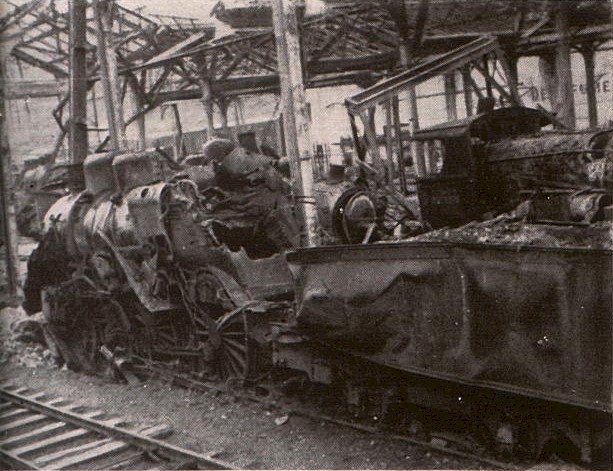 would be Matelots. It was decided that the trains would bypass Paris west of the city to ensure they made there way to the front without delay. Matelots was chosen as that point west. The men from "B" Company arrived from Paris to Matelots. After a quick investigation it was discovered there was no place to house the men. After a search in the neighboring cities suitable quarters were found at a school for young women in Versailles.
would be Matelots. It was decided that the trains would bypass Paris west of the city to ensure they made there way to the front without delay. Matelots was chosen as that point west. The men from "B" Company arrived from Paris to Matelots. After a quick investigation it was discovered there was no place to house the men. After a search in the neighboring cities suitable quarters were found at a school for young women in Versailles. 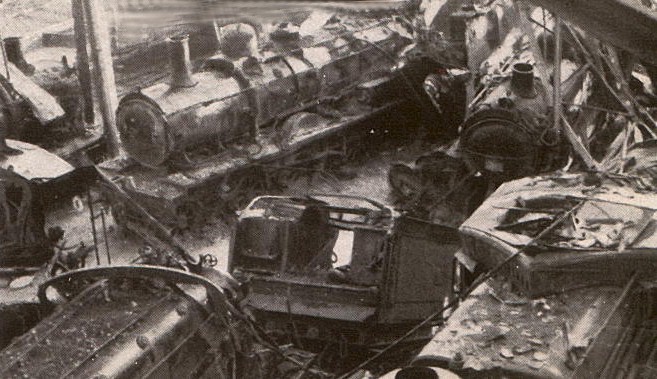 Matelots was another yard completely destroyed by bombing. Once again the men from "B" Company went about their business of repairing the engines and cars, to the tune of 36 engines and three to four cars per day. Finally after working for several months with what tools they could scrounge, the long awaited machine tools and presses began to arrive at Matelots. It became necessary to set up a machine shop in some of the rail cars. This way they could take the shop with them wherever they went.
Matelots was another yard completely destroyed by bombing. Once again the men from "B" Company went about their business of repairing the engines and cars, to the tune of 36 engines and three to four cars per day. Finally after working for several months with what tools they could scrounge, the long awaited machine tools and presses began to arrive at Matelots. It became necessary to set up a machine shop in some of the rail cars. This way they could take the shop with them wherever they went. 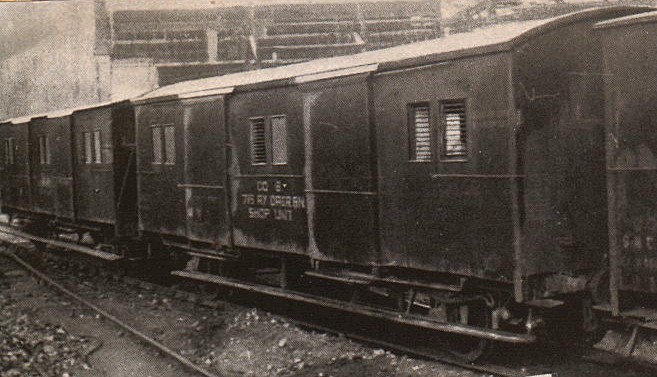 Once this was completed an idea came to the Brass that they could also make living quarters out of the cars and solve that problem the men had every time they moved into a new area. So a string a cars was chosen and the men fixed them up proper. The 716th continued it's work in the Dreux area until December 1944.
Once this was completed an idea came to the Brass that they could also make living quarters out of the cars and solve that problem the men had every time they moved into a new area. So a string a cars was chosen and the men fixed them up proper. The 716th continued it's work in the Dreux area until December 1944.
Aulnoy, France
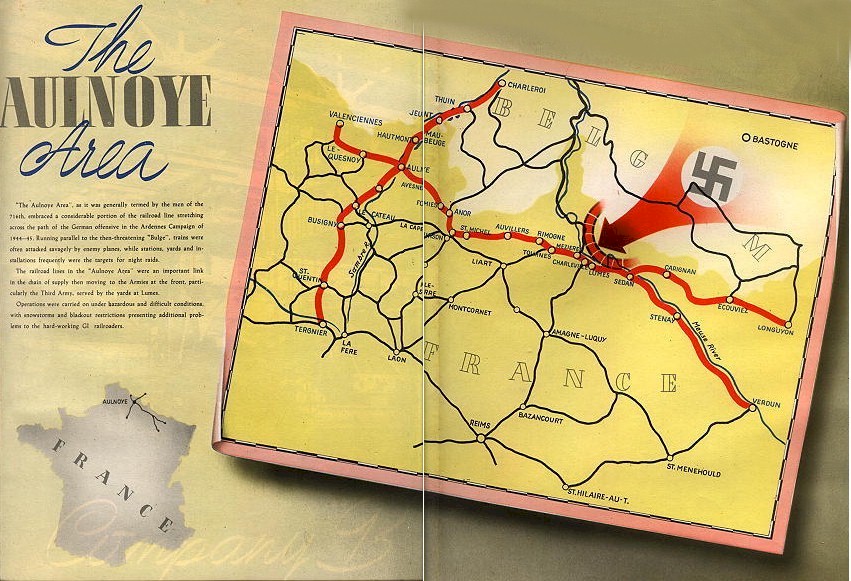 On Christmas Day 1944 the men of the 716th arrived in the Aulnoye sector of operations just in time for the Ardennes offensive. Aulnoye was located just south of the famed offensive and the 716th operated a rail line parallel to the "Bulge" The men quickly set up camp and were soon repairing and operating the rail lines between Valenciennes to Verdun, and Tergnier, France to Chareloi Belgium. All of "A" Company were kept busy
repairing the rail lines. The 716th much closer to the front than ever before were constantly plagued by German aircraft strafing the trains and the men while they were working. Attacked mostly at night when the majority of the allied fighters were grounded the Germans kept a constant vigil in the night skies. While at Lumes. France the men were not only
harassed by the German fighters, but the V-1 Buzz bombs were a nuisance as well. When "B" Company arrived at Aulnoye, the company quickly set up their headquarters and operations at the roundhouse and repair facilities. Enemy action was everywhere and their idea of living in the railcars terminated as the German Luftwaffe started bombing and strafing all railroads in the Bulge vicinity. One incident on December 26 injured three men and sacred the Hell out of the rest of the company. The German Plane was immediately nicknames Bed Check Charlie, as he appeared several times around midnight over the next few days. So the men of "B" Company found a place to stay on the outskirts of town in an abandoned factory. After a few sleepless nights in the inhospitable factory a more suitable place was found in a schoolhouse in town. Work began in earnest as the locomotives and rail cars were always in dire need of servicing. Add to that the freezing temperatures of the coldest winter in 50 years, the boys from B Company perservered to provide power to the beseiged Armies. From January 1 to February 10, 1945 the men from B Company continued with their work. In the Lumes area they were constantly bombed, strafed, and watched the V-1 buzz bombs fly by. C Company arrived in Aulnoye and began working the lines immediately. On December 26 during the height of the Battle of the Bulge a crew of men from C Company left on a special mission to Soissons. The crew had orders to move five trains to an ammo dump located near Soissons. The ammo dump wabombed by the Germans and was afire. After the crew arrived they saved as many of the cars loaded with ammo that they could and turned them over to the boys of the 722nd Rob on the main line.
By the Beginning of February the Battle of the Bulge was over and the Germans were finished offensively. The men loaded onto their train cars and moved on to their new assignment in Metz, France.
On Christmas Day 1944 the men of the 716th arrived in the Aulnoye sector of operations just in time for the Ardennes offensive. Aulnoye was located just south of the famed offensive and the 716th operated a rail line parallel to the "Bulge" The men quickly set up camp and were soon repairing and operating the rail lines between Valenciennes to Verdun, and Tergnier, France to Chareloi Belgium. All of "A" Company were kept busy
repairing the rail lines. The 716th much closer to the front than ever before were constantly plagued by German aircraft strafing the trains and the men while they were working. Attacked mostly at night when the majority of the allied fighters were grounded the Germans kept a constant vigil in the night skies. While at Lumes. France the men were not only
harassed by the German fighters, but the V-1 Buzz bombs were a nuisance as well. When "B" Company arrived at Aulnoye, the company quickly set up their headquarters and operations at the roundhouse and repair facilities. Enemy action was everywhere and their idea of living in the railcars terminated as the German Luftwaffe started bombing and strafing all railroads in the Bulge vicinity. One incident on December 26 injured three men and sacred the Hell out of the rest of the company. The German Plane was immediately nicknames Bed Check Charlie, as he appeared several times around midnight over the next few days. So the men of "B" Company found a place to stay on the outskirts of town in an abandoned factory. After a few sleepless nights in the inhospitable factory a more suitable place was found in a schoolhouse in town. Work began in earnest as the locomotives and rail cars were always in dire need of servicing. Add to that the freezing temperatures of the coldest winter in 50 years, the boys from B Company perservered to provide power to the beseiged Armies. From January 1 to February 10, 1945 the men from B Company continued with their work. In the Lumes area they were constantly bombed, strafed, and watched the V-1 buzz bombs fly by. C Company arrived in Aulnoye and began working the lines immediately. On December 26 during the height of the Battle of the Bulge a crew of men from C Company left on a special mission to Soissons. The crew had orders to move five trains to an ammo dump located near Soissons. The ammo dump wabombed by the Germans and was afire. After the crew arrived they saved as many of the cars loaded with ammo that they could and turned them over to the boys of the 722nd Rob on the main line.
By the Beginning of February the Battle of the Bulge was over and the Germans were finished offensively. The men loaded onto their train cars and moved on to their new assignment in Metz, France.
 RHINELAND:
The mess at Metz and Sablon
RHINELAND:
The mess at Metz and Sablon RAOUL
SANTOS: Homepage
RAOUL
SANTOS: Homepage They
Served with Honor: Home page
They
Served with Honor: Home page